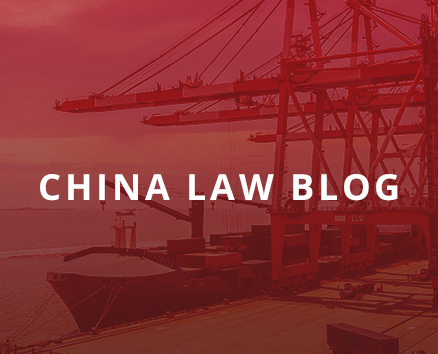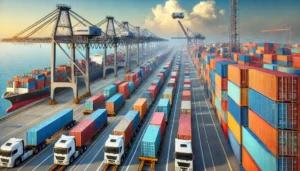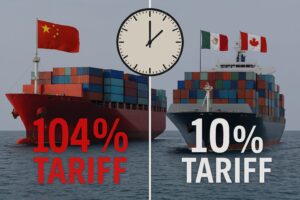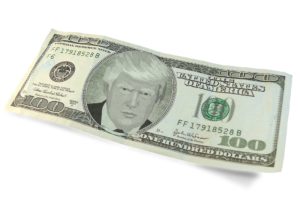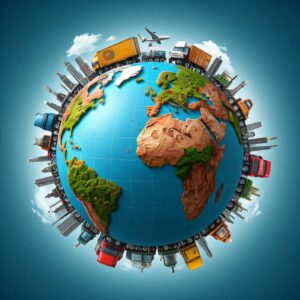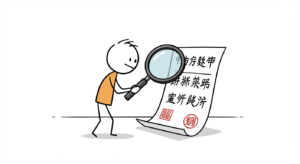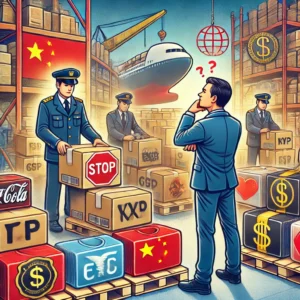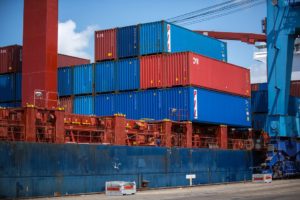Massive New Tariff Changes: What You Need to Know NOW
The latest round of tariff changes is here, and the impact will be swift and significant.
The White House recently announced sweeping new tariffs, including a 10% baseline tariff on all imports and country-specific tariff rates set to take effect soon. Adding to the pain for many importers, the de minimis exemption for low-value shipments from China is being eliminated. Here’s what you need to know to prepare.
Key Points:
1. 10% Tariff on All Imports (Effective April 5)
-
An Executive Order issued on April 2 imposes an additional 10% ad valorem duty on all goods imported into the U.S.
-
Applies to goods entered for consumption or withdrawn from warehouse on or after 12:01 a.m. ET on April 5.
-
Transit Exemption: Goods loaded and in transit on the final mode of transit into the U.S. before 12:01 a.m. ET on April 5 will not be subject to the 10% duty.
2. Country-Specific Tariffs Begin April 9
-
Starting April 9, goods from countries listed in Annex I of the Executive Order will face individual ad valorem tariff rates.
-
For example:
-
China: 34%
-
South Korea: 26%
-
India: 27%
-
European Union: 20%
-
-
See Annex I for the complete list of countries and their applicable rates.
-
Transit Exemption: Goods from Annex I countries that are already in transit on the final mode of transit into the U.S. before 12:01 a.m. ET on April 9 will not be subject to these country-specific tariffs. Again, GET YOUR PRODUCTS LOADED NOW!
3. Free Trade Agreements Not Exempt
-
These tariffs will apply to all goods from impacted countries, regardless of existing U.S. Trade Agreements, unless explicitly excluded.
4. Elimination of China De Minimis (Effective May 2)
-
Beginning May 2, low-value imports (≤ $800) from China will no longer qualify for duty-free de minimis treatment.
-
All applicable duties must be paid under normal entry procedures.
-
Packages valued at or below $800 sent through non-postal methods will be subject to all applicable duties.
-
Packages valued at or below $800 sent through the international postal network will be subject to a duty rate of 30% of their value or $25 per item (increasing to $50 per item after June 1, 2025).
5. CBP Guidance Expected Soon
-
Customs and Border Protection (CBP) will release additional instructions on how these measures will be implemented. We will provide updates as soon as official guidance is issued.
6. Additional Considerations from Annex I and Annex II
-
Annex I: Provides a detailed list of countries subject to country-specific tariffs starting April 9.
-
Annex II: Lists products that are excluded from the tariffs, including:
-
Products already covered by Section 232 tariffs (e.g., steel, aluminum, autos, auto parts)
-
Pharmaceuticals (some), semiconductors, copper, lumber, energy, and critical minerals
-
Goods under 50 USC 1702(b) exceptions
-
-
Additionally, USMCA-compliant goods from Canada and Mexico remain duty-free. However, non-compliant goods are still subject to existing tariffs related to fentanyl or migration under IEEPA (25% or 10% tariffs).
What This Means for Importers
These changes represent some of the most significant trade policy shifts in recent memory. Importers, particularly those bringing in goods from China, South Korea, India, and the European Union, will be hit hardest.
The elimination of the de minimis exemption for low-value shipments from China is likely to cause major disruptions and increase costs for U.S. businesses relying on small-scale imports.
Preparing for the Changes
Here’s what you should do to prepare:
-
Review Your Supply Chain: Assess which of your products will be affected by the new tariffs and adjust your sourcing strategies accordingly.
-
Reclassify Your Products (If Applicable): Review your HTS codes to determine if your products might qualify for exclusion or a lower rate.
-
Review Annex I and Annex II Thoroughly: Ensure you understand which of your products are impacted and whether you qualify for any exemptions.
-
Consult Legal Experts: These tariffs are layered on top of existing tariffs, so it’s essential to have expert guidance to navigate the complexities. Very little is clear about what just came out, and we do expect that the tariff rates for various countries will change.
For Further Guidance….
For comprehensive strategies on navigating these changes, we recommend our newly published guide, THE Guide for LEGALLY Avoiding Today’s and Tomorrow’s U.S. Tariffs. Tailored specifically for the current situation, this free guide is also available in Spanish and in Chinese. It provides detailed advice on how to legally maneuver through the new tariff landscape.




